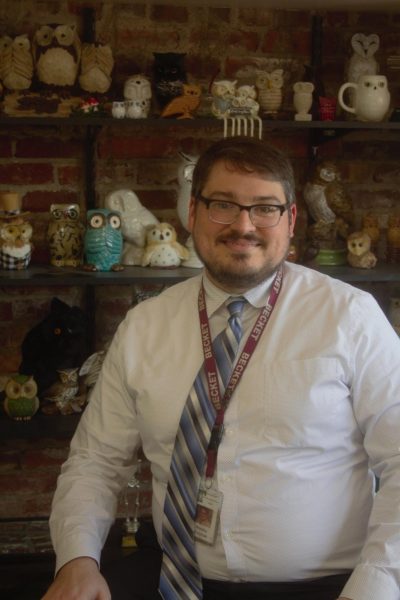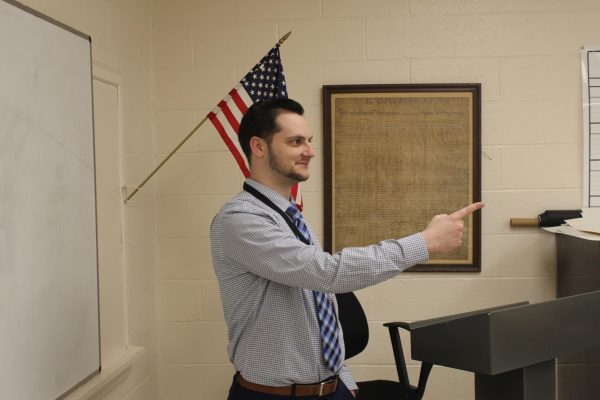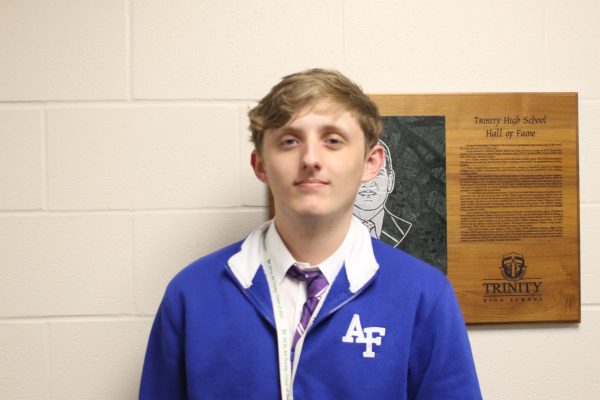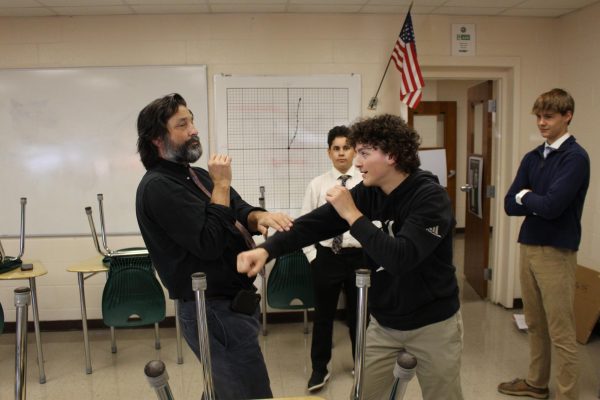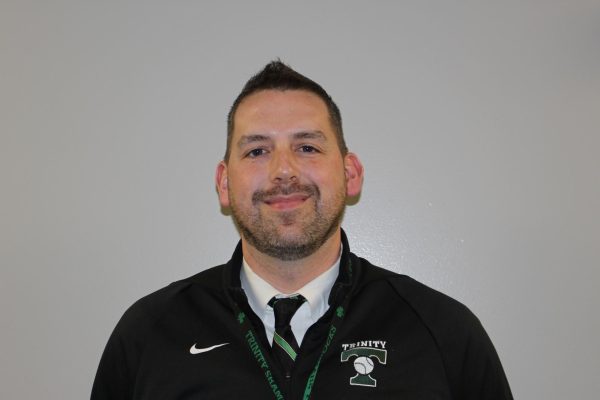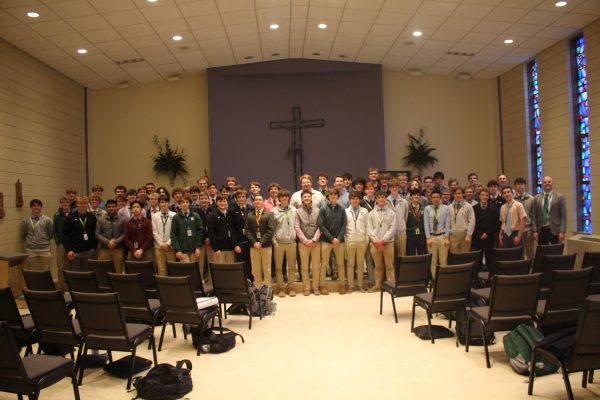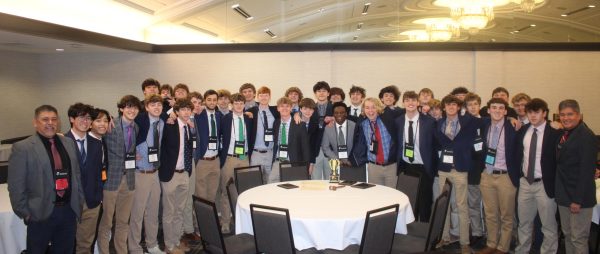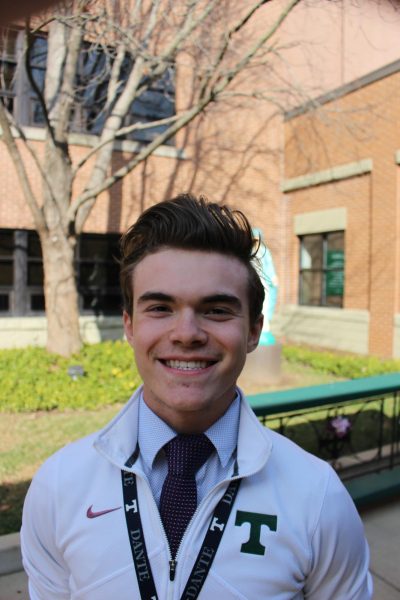Costa Rica Trip a ‘Great World Experience’
February 15, 2017
Witnessing the wonderful and the terrifying, a Trinity group traveled to Costa Rica for the second time in the past nine months.
Following a trip to Costa Rica during the summer, Trinity teacher Mr. Patrick Heintz and Trinity juniors Jake Sedgwick, Sam Roth and Scott Graehler traveled to the Central American country in January.
Heintz, a biologist, collaborated with Leatherback Trust, a company that funds projects that protect leatherback turtles, to set up a the trip, during which Trinity students enhanced their education by performing experiments in the field and taking part in an experiment on the sea turtle population in the northwest side of Costa Rica.
Heintz said, “Not many schools have the opportunities we have. Trinity values experience learning. The (Costa Rica) program helps kids decide what they want to do in lives. It was focused on a long-term experiment on sea turtles, which had the kids thinking is that what they want to do.”
The expedition involved the tagging of sea turtles. When they found a nest, they counted the number of eggs and helped protect them from poaching by either moving them into other holes or by camouflaging them.
I also went because it looks very good on a college resume. It shows that you have been in the field. It really impacted me. I witnessed the poor living conditions of the locals, and it made me appreciate what I have.
— Trinity junior Sam Roth
Heintz described their experienced: “We couldn’t use our flashlights or the flash on our phones because that would alert poachers to sea turtle nests. It’s a really big problem down there because that’s what the people grew up on, sea turtles. Thanks to Leatherback Trust there has been a 94 percent drop in poaching at the beach we were at.”
The group also witnessed sea turtles hatching.
“We got to help release baby sea turtles,” Heintz said. “When they hatch, they use sound to get back to the ocean, the sound of the waves. We also saw a Pacific black turtle lay eggs. It was very slow, but it did dig this pretty huge, perfect hole. It took her four and a half hours to complete. She looked exhausted. After that, we got to see her slowly walk back to the ocean.”
What made these students decide to take part in this adventure — the beauty of the land or the educational benefits? For Sedgwick, it was both.
He said, “Well, I went on the last (trip) and I had fun, so I wanted to go. I also want to do something with biology science, so I thought let’s get ahead of the game.”
Roth went to experience hands-on science. “Just being able to experience the whole process of sea turtles laying eggs. It was pretty cool,” he said. “I also went because it looks very good on a college resume. It shows that you have been in the field. It really impacted me. I witnessed the poor living conditions of the locals, and it made me appreciate what I have.”
Sedgwick said his favorite experience on the trip was “probably seeing the sea turtles during the day time. I never saw one before in its natural habitat.”
Roth told of his sea turtle adventure: “We were on the beach at 1 a.m., and everyone was tired. We took shifts to look out for sea turtles. Well, I was sleeping when someone finally found a sea turtle making a nest, but no one woke me up. (After waking) I walked around for a little bit, and I thought I was dreaming.
“Well, I went back to bed and about an hour later one of the adults came back to the compound. He told me that they found one building a nest, so we went down to the beach, and I didn’t miss much because it’s a long process. Basically, I got an extra hour of sleep. I thought that was pretty neat.”
While Costa Rica seems to be a place where having fun and relaxing is normal, did paradise include any dangers?
Sedgwick didn’t think so but did say the spiders were huge. He said, “They were the size of a person’s hand, but they’re harmless. One was the top side of our door, and it didn’t hurt anyone.”
Roth had a similar opinion and said there were scorpions and snakes, “but if you left them alone, they would leave you alone.”
One the other hand, Graehler had a very different opinion.
He said, “Yeah, there were dangers. Every night we had to check our beds, sheets, pillows and shoes for scorpions. Snakes were always close by. They were literally next to our cabin as we slept.”
There were also risks at the beach, Graehler said. “On the last day we got a free day where we just went to the beach and swam. Before we got to the beach, we were told to be careful because the beach floor was sharp, and creatures could bite you.
“Well, we were having a great time until one of the female scientists started to scream. She hobbled to the shore line while screaming her lungs out. We were shocked. She finally got to the sand and flopped there. She was bleeding really bad from her leg. After we saw that, we knew she was stung by a stingray. We attended to her, and she was escorted back to the compound.”
Despite the risks, Heintz spoke of the beauty of Costa Rica.
He said, “Costa Rica is rated one of the happiest places in the world. When our kids go there, they find out that Costa Ricans are really educated. They have free education and a 94 percent education rate. Costa Ricans also know that tourism is their number-one income, so they try to keep the beauty of the land. It’s really a unique country.”
Also impressed with the countryside, Sedgwick said, “Lots of vegetation and farms. Our living quarters were located in a dry forest. It was really impressive. That’s why I really like Costa Rica. The locals really care about their country and preserving natural resources. I definitely learned a lot on how research is done in the field and the challenges that come with it. It was great world experience.”
Graehler described a place filled with color: “We stayed in the middle of the forest in a place called Horizontes. We were surrounded by trees. Mountains and volcanoes were in the distance. The weather was great. It was low 70 degrees to a high 80 degrees. At night, though, it would drop to mid 60 degrees. The beach was dry with white sand. The ocean was bright blue, deep, and really cold. The sunsets were deep orange.”

